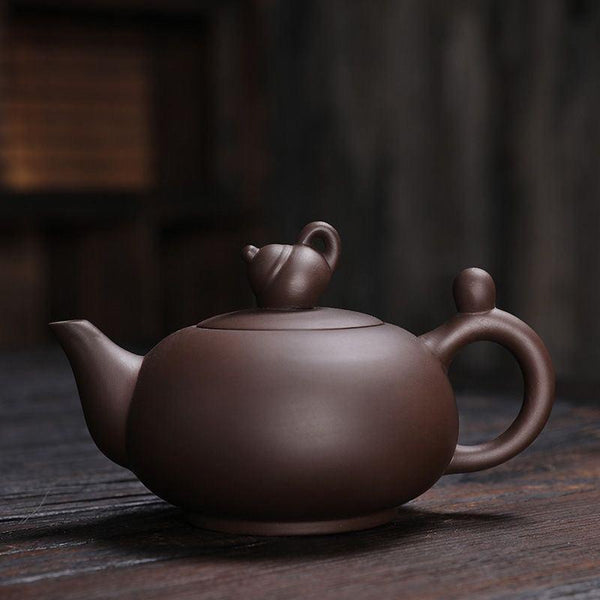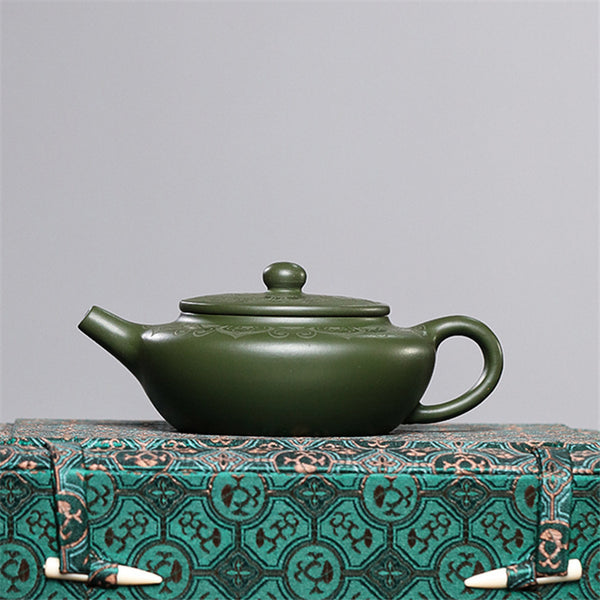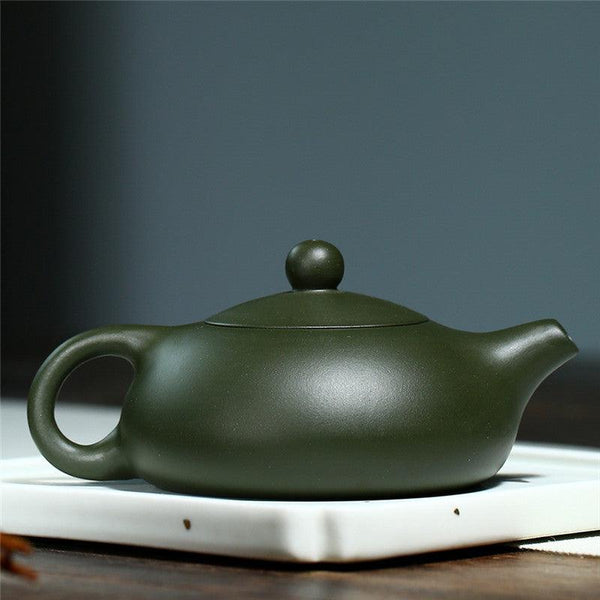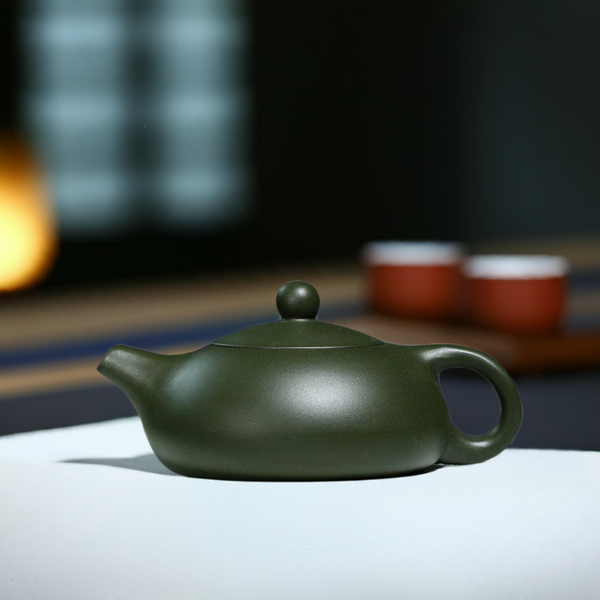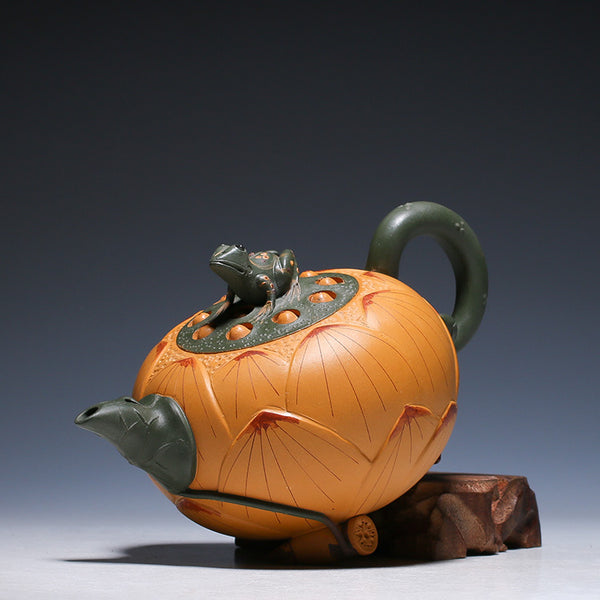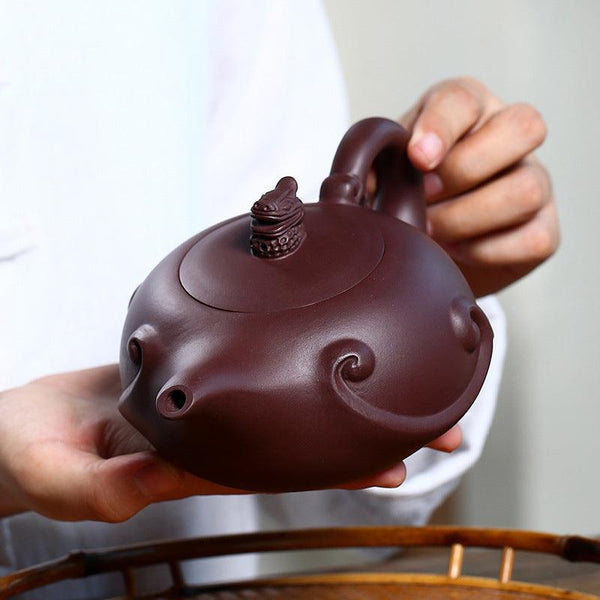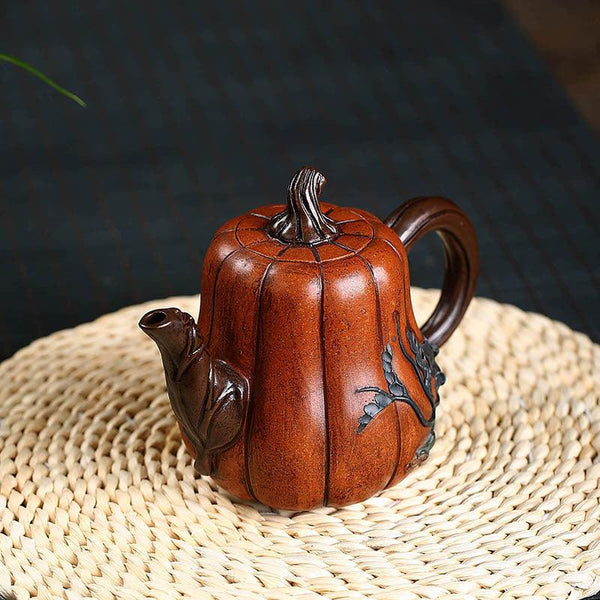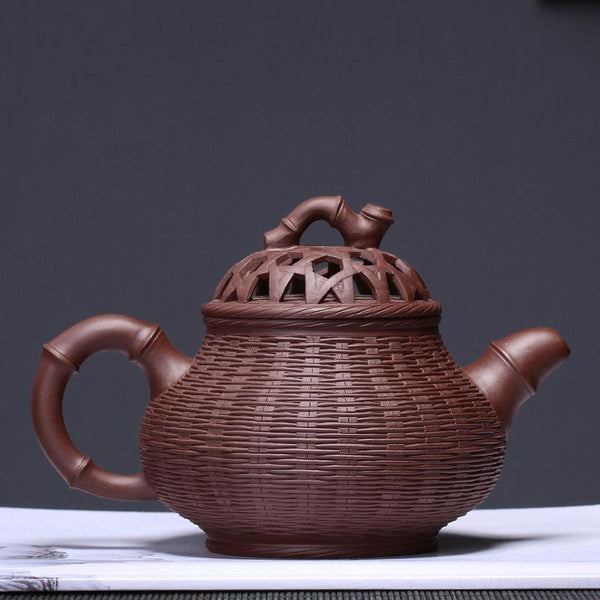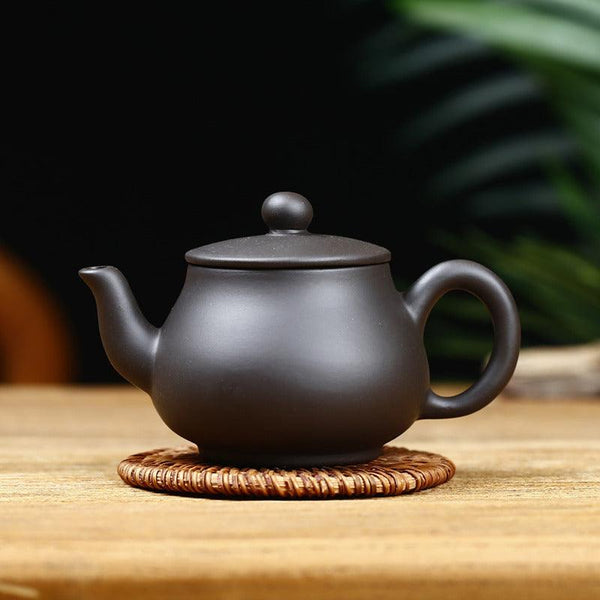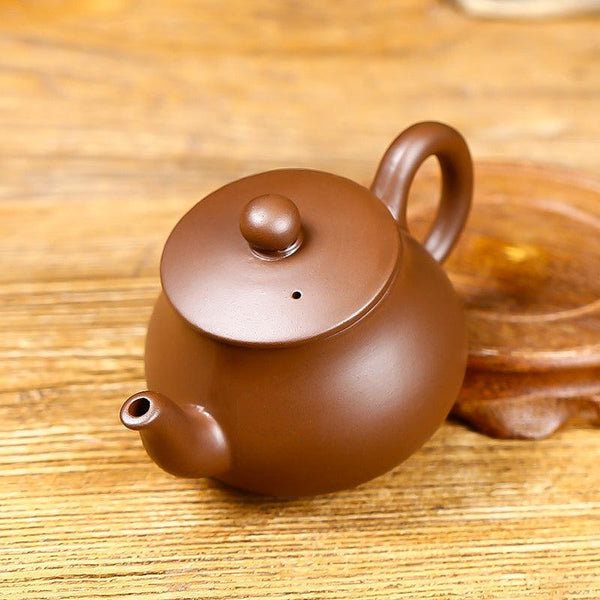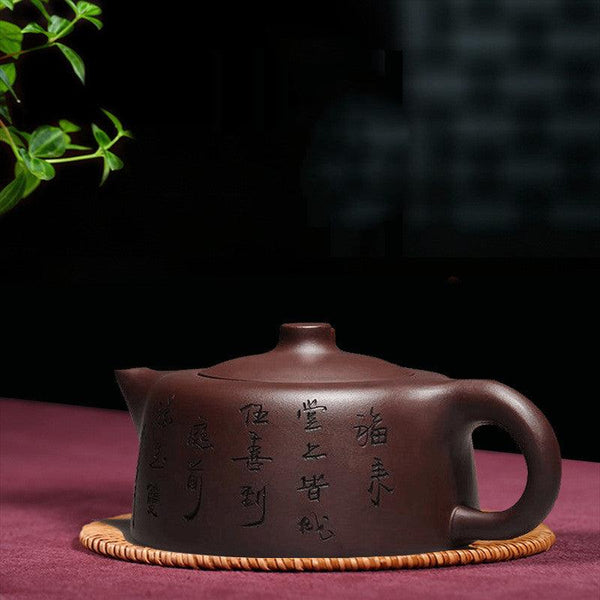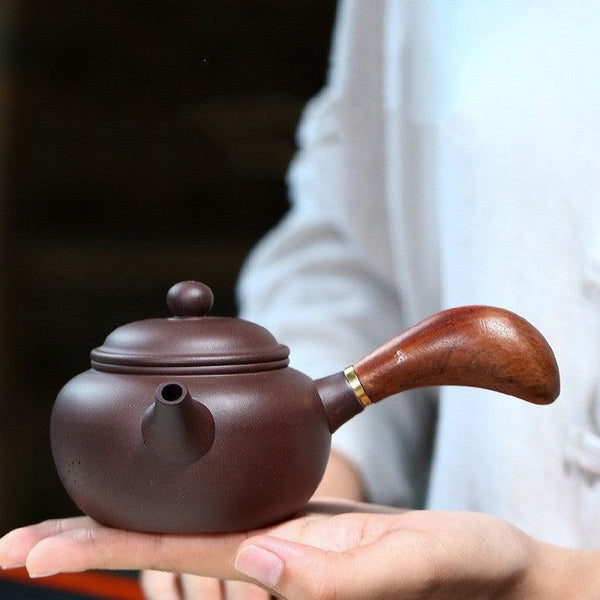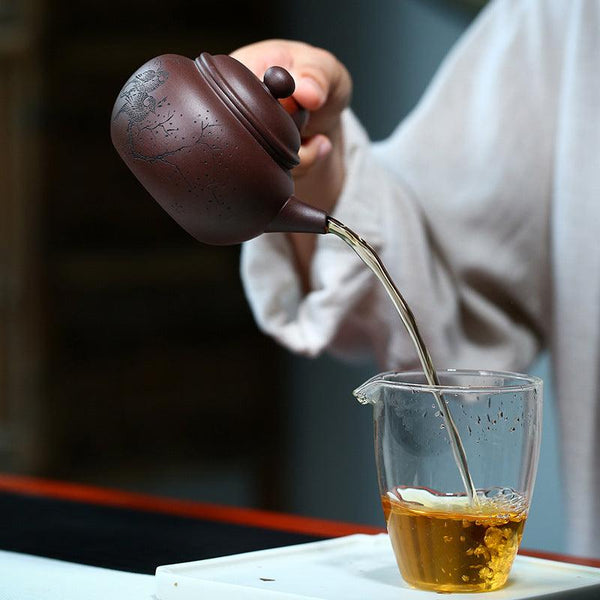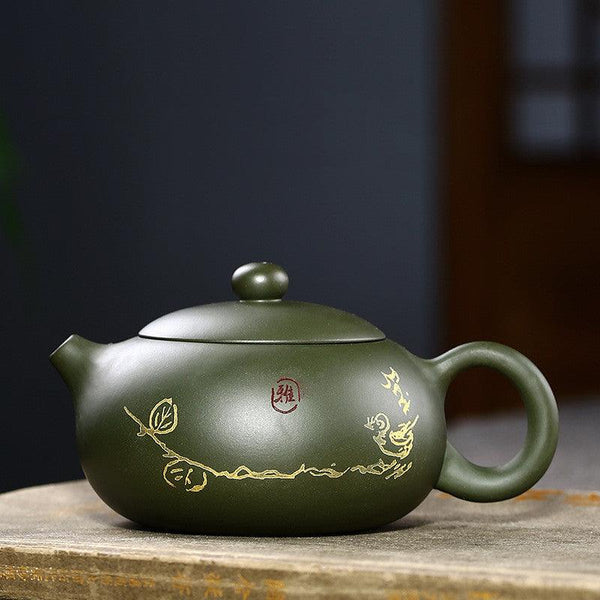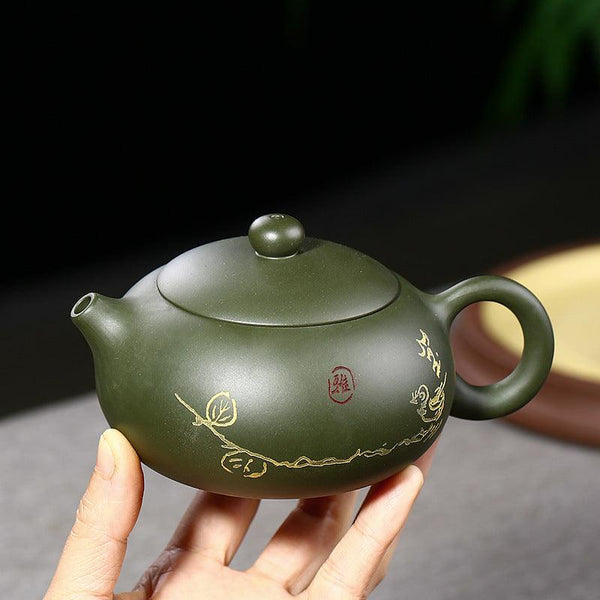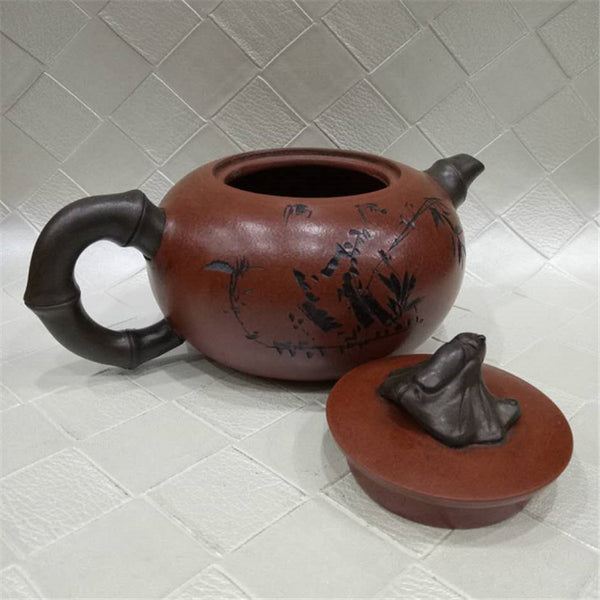Zisha teapots, also known as Yixing clay teapots, represent a cornerstone of traditional Chinese culture. Crafted from a unique clay found in Yixing, China, these teapots have garnered appreciation for centuries, both for their functionality and as exquisite works of art. Let’s take a closer look at the journey of Zisha teapots, from their origins to their place in today’s world.
Understanding Zisha Clay
What is Zisha Clay?
Zisha clay, also known as purple sand clay, is a rare mineral-rich material found only in the Yixing region of Jiangsu province, China. It ranges in colors from warm browns to purples, reds, and yellows, each variant imparting a distinctive character to the teapot.
Unique Properties of Zisha Clay
The porous structure of Zisha clay allows it to absorb and retain the essence of tea, creating a unique “memory” with each brew. Over time, Zisha teapots develop a natural patina, adding to their beauty and enhancing the flavor of tea.
The Early Beginnings of Zisha Teapots
Zisha teapots are believed to have originated during the Ming Dynasty (1368–1644), specifically around the Zhengde period. The story begins at a small temple in Yixing’s Jinsha region, where a monk’s assistant named Gong Chun became inspired by the artistry of pottery while observing the temple’s master potter.
The Influence of Gong Chun in the Ming Dynasty
The Story of Gong Chun and the Monastery
Gong Chun’s breakthrough moment came as he decided to experiment with Zisha clay, shaping a teapot with natural contours that resembled tree bark and roots. This design was unique, showcasing the organic texture and color of Zisha clay.
Gong Chun’s Contribution to Zisha Teapot Craftsmanship
Gong Chun’s style set a new standard for Zisha teapots, laying the foundation for a long-standing tradition. His work marked the beginning of Zisha teapot artistry and established Yixing as the birthplace of these coveted teapots.
The Flourishing Art of Zisha in the Ming Dynasty
During the Ming Dynasty, Zisha teapots gained popularity among the literati class, who saw them as symbols of refined taste. The art of Zisha teapot making became more sophisticated, incorporating detailed craftsmanship and unique designs.
The Rise of Literati and Cultural Significance
Poetry and Art on Teapots
Literati not only admired Zisha teapots but also adorned them with poetry, calligraphy, and symbolic carvings. This added cultural and artistic value, turning Zisha teapots into treasured possessions.
A Symbol of Refined Taste
Among scholars and tea enthusiasts, owning a Zisha teapot became synonymous with sophistication. These teapots were more than brewing vessels—they were expressions of identity and artistry.
Zisha Teapots in the Qing Dynasty
Peak of Zisha Craftsmanship
The Qing Dynasty (1644–1912) witnessed a golden age of Zisha teapot creation. Skilled artisans further refined the craft, exploring innovative designs and techniques that captivated collectors and connoisseurs.
Famous Artisans and Their Legacy
Notable artisans like Chen Mingyuan and Shao Daheng rose to prominence, each bringing unique styles and designs to Zisha teapots. Their works remain highly esteemed and set standards that continue to inspire today’s artisans.
Chen Mingyuan’s Impact on Zisha Teapot Design
Natural Elements in Design
Chen Mingyuan’s teapots often drew inspiration from nature, incorporating elements like bamboo, lotus, and pine. His work exemplified harmony between natural form and functionality, making his designs highly valued in both artistic and practical terms.
Artistry and Experimentation
Chen Mingyuan’s legacy lies in his ability to push boundaries, using innovative shapes and creative glazes to craft teapots that were not only functional but also aesthetically compelling.
The Influence of Shao Daheng
Shao Daheng’s Zisha teapots were known for their sturdy and bold designs, often conveying strength and elegance. His work emphasized robust lines and a classic aesthetic that helped solidify Zisha teapots as a national symbol of artistry.
Zisha Teapots as Global Ambassadors
During the Qing Dynasty, Zisha teapots began reaching international markets, earning admiration from collectors worldwide. They became symbols of Chinese culture, respected for their craftsmanship and historical significance.
Modern Challenges and Changes
Social Upheavals and Zisha Crafting
Despite social changes and upheavals in the 19th and 20th centuries, the art of Zisha teapot making endured. Artisans upheld their traditions while facing new economic and social landscapes.
Continuity and Innovation in Modern Times
Contemporary Zisha artists combine traditional techniques with modern aesthetics, continually pushing the craft forward. Today, Zisha teapots continue to captivate tea lovers and collectors globally.
Innovation in the 20th Century
In the early 20th century, modern artists explored new designs and glazes, blending the age-old techniques of Zisha craftsmanship with modern tastes. This period of experimentation introduced fresh perspectives to Zisha teapot making.
Zisha Teapots in Modern China
Today, Zisha teapots remain a vital part of Chinese tea culture. They are cherished in ceremonies, collected as art, and appreciated for their unique ability to enhance the tea-drinking experience.
Cultural Significance Today
Zisha teapots represent more than functional items—they are symbols of Chinese heritage and artistry, bridging the past with the present. Their appeal lies in their timeless quality, reflecting the dedication and creativity of generations of artisans.
Conclusion: Preserving a Cultural Legacy
Zisha teapots are not only pieces of Chinese history but also symbols of the cultural spirit and artistry that persist in the heart of Chinese tea culture. Appreciating and preserving these teapots allows us to honor the past while carrying the beauty of Zisha craftsmanship into the future.


